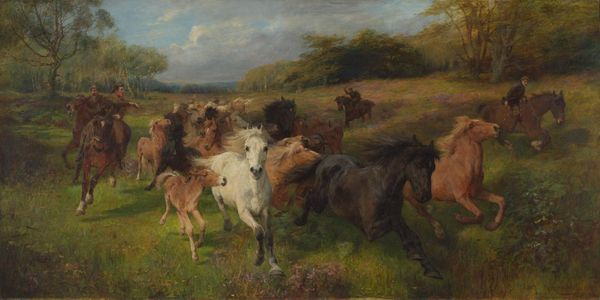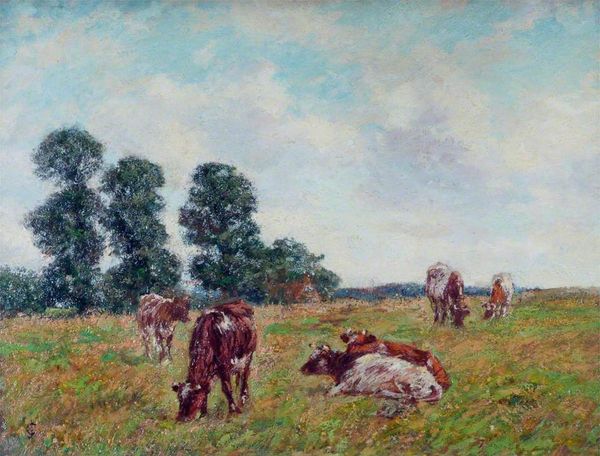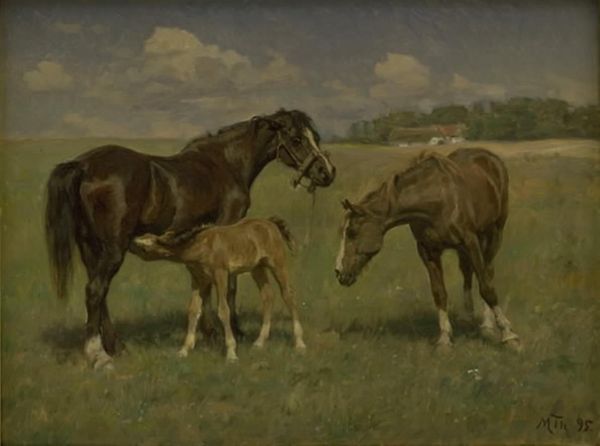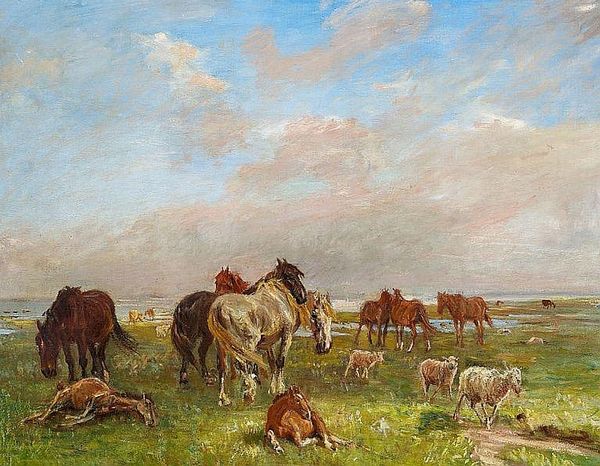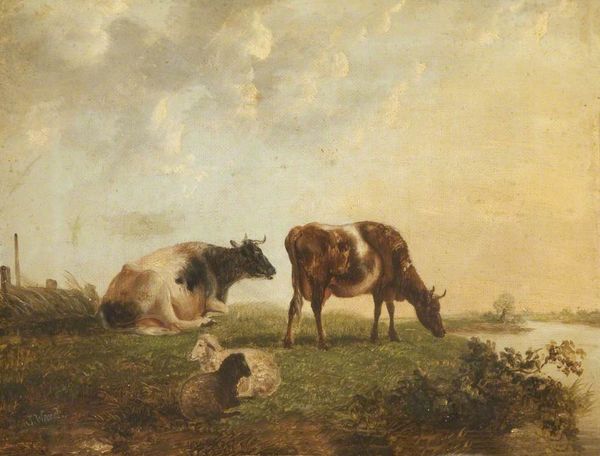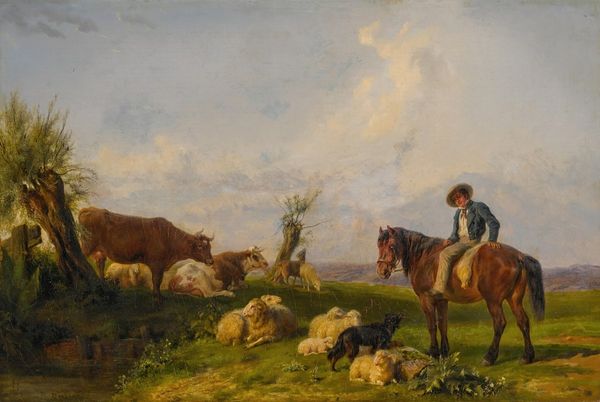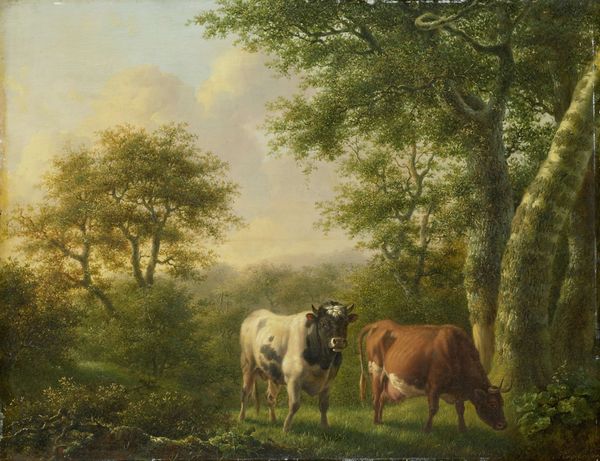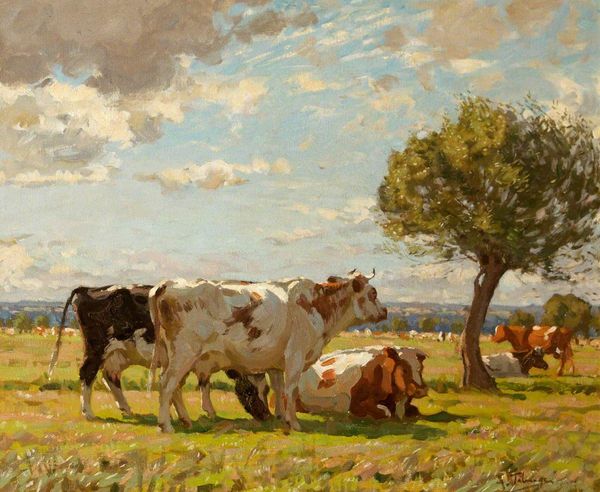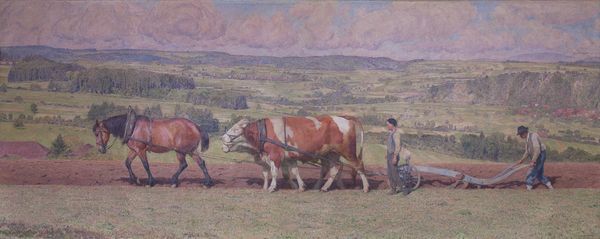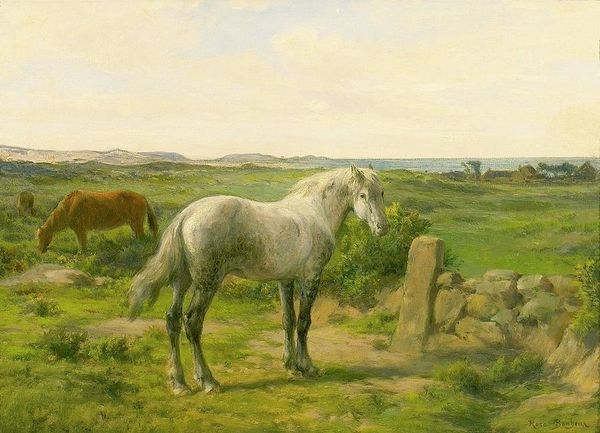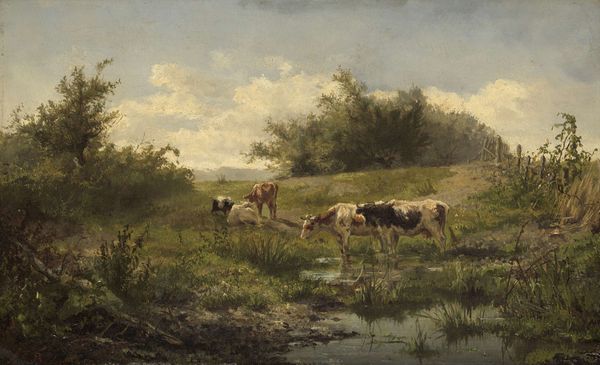
Dimensions: 85.5 cm (height) x 190 cm (width) (Netto)
Curator: My first impression is one of tranquil harmony; what strikes you as you observe this oil on canvas? Editor: Serenity is apt, though I see an almost staged bucolic scene. There's a pervasive softness—a subdued light that creates an atmosphere of peaceful contemplation. It seems to hearken back to older traditions of Romanticism but lacks some of its drama. Shall we dive into the history? Curator: Indeed. "Heste i Dyrehaven," painted in 1896 by M. Therkildsen, partakes in the Realist style, depicting horses in Dyrehaven, the famed deer park near Copenhagen. One cannot separate depictions of nature from land rights, commodification, and human labor. How are these notions challenged in this image? Editor: The light seems almost filtered, not unlike many works made en plein air during the Impressionist movement. Yet, where some Impressionists broke down objects into points of light, this scene holds its structure firmly in place. See how each element—the trees, the horses, the ground itself—exists distinctly and recognizably within the larger composition. The relationship to the landscape is definitely present but not fully explored, at least visually. Curator: I think you pinpointed a major aspect. Realism often portrays daily life. It emerged in the mid-19th century France, a movement responding to romanticism that began emphasizing the commonplace. Now, horses in art and literature have, for centuries, served as metaphors for strength and class, often symbols of elitism and associated with the wealthy. How do you feel it functions in that manner? Editor: One must analyze its compositional features closely. The horizon is quite low. Therefore, a good two-thirds of this canvas presents foliage. The figures themselves, even as 'animal portraits,' seem integrated into the surrounding setting. Therkildsen isn’t isolating the animals for their symbolism alone; instead, their inherent and natural interaction with land generates a potent reading, beyond just status. The muted tones contribute here. What initially felt Romantic, has transformed, at closer range, to something closer to pastoral Realism. Curator: Looking at the use of landscape in this picture encourages a deeper comprehension of Denmark's human relationship to nature in the 19th century. By combining my historical viewpoint and your compositional evaluation, a story develops beyond an everyday encounter in the forest. Editor: Absolutely. It’s a visual poem blending form, nature, and subtle narrative to enrich our understanding.
Comments
No comments
Be the first to comment and join the conversation on the ultimate creative platform.
